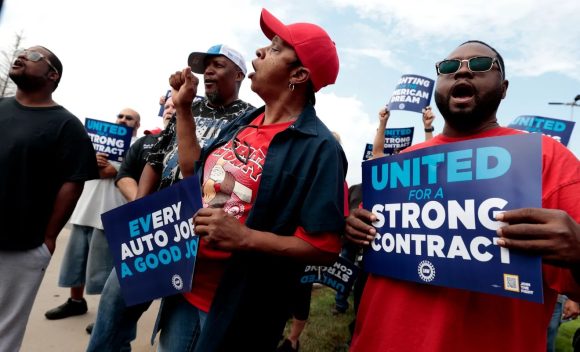Given the likely fact that there will be an strike by 150,000 autoworkers that will affect a number of plants, Michael Pearce, lead US economist for Oxford Economics, provided his take on the implications for the U.S. economy.
- The strike could shut down close to a third of auto production. This could push US payroll growth temporarily negative, and add to near-term price pressures.
- However, as union participation and strike action is still low from a historical perspective, we don’t think this marks a turning point in labor power, nor does it suggest an increased risk of a durable price-wage spiral over the coming years.
- We estimate a strike covering all workers would directly reduce US GDP by 0.2%-0.3% due to a 30% decline in motor vehicle output for the duration of the strike. That impact would begin to show up in the September industrial production report. But because of the way the data are calculated, any hit to payrolls wouldn’t come until October.
- Assuming the strike ended within 4-6 weeks, there would probably be enough time for output to rebound before the end of the quarter, meaning the impact on Q4 GDP would be negligible. A more lasting risk is that a prolonged strike would disrupt the recovery in auto supply chains, lending an upside risk to our inflation forecast.
- The dispute come on the heels of a new contract won this summer by workers at UPS, who are represented by the Teamsters union. Unions are gaining more traction, but with only a small fraction of workers members of unions, we think the impact of organized labor on wages and inflation will remain limited for now.

